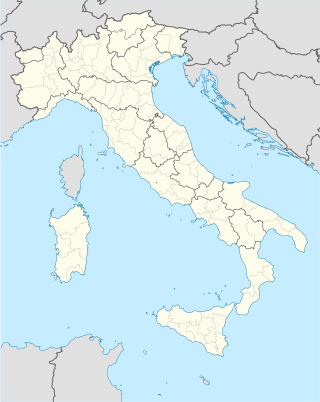로마자
Roman type라틴어 문자 활자법에서, 로만은 검정 문자, 이탤릭체와 함께 세 가지 주요 역사 유형 중 하나이다.로마 활자는 15세기 유럽의 필사본 양식을 본떠 만든 것으로, 고대 로마에서 사용된 비문 대문자와 [5]신성 로마 제국에서 개발된 카롤링거 시대의 분자를 조합한 것이다.
르네상스 초기 동안, 로마자와 이탤릭체는 따로 사용되었습니다.오늘날, 로마자와 이탤릭체가 혼합되어 있고, 대부분의 서체는 이탤릭체 또는 사선체와 연관된 직립 로마체로 구성되어 있다.
초기 로마 서체는 다양한 디자인을 보여주는데, 예를 들어 현재 검은 [6][7][8]글씨로 여겨지는 것과 유사하다.베니스의 니콜라스 젠슨과 알두스 마누티우스, 그리고 후에 프랑스의 로베르 에스티엔과 같은 인쇄기와 활자 제작자들은 로마 활자의 현대적 특징을 성문화했다. 예를 들어, 거의 곧은 오른쪽 다리를 가진 'h', 대문자 M과 N의 바깥쪽에 있는 'e', 그리고 [9][10]1530년대에 십자 획의 수평을 가진 'e'이다.
인기 있는 로마 서체는 펨보, 바스커빌, 캐슬론, 젠슨, 타임스 뉴 로만, 가라몬드를 포함한다.
로마라는 이름은 고전 [11][12]고대 로마 문자와는 대조적으로 르네상스 시대의 초기 이탈리아 서체와 그에 기초한 대부분의 직립 서체를 구분하는 데 관례적으로 자본화되지 않았다.
「 」를 참조해 주세요.
메모들
- ^ Amert, Kay (April 2008). "Stanley Morison's Aldine Hypothesis Revisited". Design Issues. 24 (2): 53–71. doi:10.1162/desi.2008.24.2.53. S2CID 57566512.
- ^ Vervliet, Hendrik D.L. (2008). The palaeotypography of the French Renaissance. Selected papers on sixteenth-century typefaces. 2 vols. Leiden: Koninklijke Brill NV. pp. 90–91, etc. ISBN 978-90-04-16982-1.
[On Robert Estienne's typefaces of the 1530s]: Its outstanding design became standard for Roman type in the two centuries to follow...From the 1540s onwards French Romans and Italics had begun to infiltrate, probably by way of Lyons, the typography of the neighbouring countries. In Italy, major printers replaced the older, noble but worn Italian characters and their imitations from Basle.
- ^ Bergsland, David. "Aldine: the intellectuals begin their assault on font design". The Skilled Workman. Retrieved 14 August 2015.
- ^ Parkes, Malcolm Beckwith (1992). Pause and Effect: An Introduction to the History of Punctuation in the West. Aldershot, UK: Scolar Press. p. 215.
- ^ 브링허스트, 페이지 124
- ^ Boardley, John. "The first roman fonts". ilovetypography. Retrieved 21 September 2017.
- ^ Boardley, John. "Unusual fifteenth-century fonts: part 1". i love typography. Retrieved 22 September 2017.
- ^ Boardley, John. "Unusual fifteenth-century fonts: part 2". i love typography. Retrieved 22 September 2017.
- ^ Olocco, Riccardo. "The Venetian origins of roman type". Medium. C-A-S-T. Retrieved 27 January 2018.
- ^ Carter, Harry (1969). A View of Early Typography up to about 1600 (Second edition (2002) ed.). London: Hyphen Press. pp. 72–4. ISBN 0-907259-21-9.
De Aetna was decisive in shaping the printers' alphabet. The small letters are very well made to conform with the genuinely antique capitals by emphasis on long straight strokes and fine serifs and to harmonise in curvature with them. The strokes are thinner than those of Jenson and his school...the letters look narrower than Jenson's, but are in fact a little wider because the short ones are bigger, and the effect of narrowness makes the face suitable for octavo pages...this Roman of Aldus is distinguishable from other faces of the time by the level cross-stroke in 'e' and the absence of top serifs from the insides of the vertical strokes of 'M', following the model of Feliciano. We have come to regard his small 'e' as an improvement on previous practice.
- ^ 브링허스트.
- ^ 네스빗.
레퍼런스
- Bringhurst, Robert (2008), 인쇄 스타일의 요소 (버전 3.2).밴쿠버:하틀리 & 마크스.흔히 간단히 "Bringhurst"라고 불리는 Elements는 현재 활자체 분야의 영어 권위자로 널리 인정받고 있습니다.
- 네스빗, 알렉산더 문자의 역사와 기술(1957), 도버 출판사, 주식회사.ISBN 0-486-40281-9.도버판은 1950년에 프렌티스 홀 주식회사가 레터링이라는 제목으로 처음 출판한 작품의 요약 및 수정본이다. 디자인으로서의 레터링의 역사와 기술
외부 링크
 Wiktionary에서 로만의 사전적 정의
Wiktionary에서 로만의 사전적 정의


